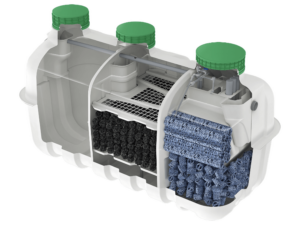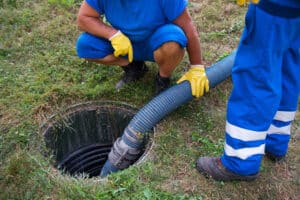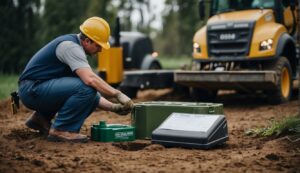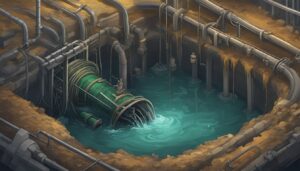Many of Suffolk County’s waterways and lakes experience harmful algal blooms, including those caused by cyanobacteria. In some cases, these blooms can be toxic to humans, pets, and wildlife.
Cyanobacteria in particular can pose a risk to human health. Therefore, it’s important to understand what cyanobacteria is, its effects, and how to help reduce the likelihood of cyanobacteria blooms.
What are Cyanobacteria?
Cyanobacteria are a type of microscopic organism that are also known as blue-green algae. Cyanobacteria are typically present in marine and fresh-water environments in low enough numbers not to cause problems.
Cyanobacteria spread quickly in environments that are warm and rich in nitrogen and phosphorus. These nutrients leaching from septic tank overflow and lawn fertilizers can contribute to cyanobacteria blooms when they make their way into our waterways.
Blooms aren’t always visible, but when they are, they can discolor water and look like foam or scum on the surface.
While these blooms can form at any time of the year, they’re most commonly found in late summer and early fall. When the blooms die off, the water may give off an unpleasant smell similar to rotting plants.
Studies have found traces of cyanobacteria blooms in several of Suffolk County’s freshwater systems, including those with public beaches. In 2004, a 20-lake survey found that all lakes contained potentially harmful cyanobacteria and the toxin microcystin.
Among all 20 lakes, 15 had toxin levels that exceeded the World Health Organization’s permissible levels for drinking water. In addition, five of the lakes had toxin levels that had a moderate-to-high risk to human health, including Lake Ronkonkoma.
Follow-up studies have found blooms almost annually in some lakes, while others (including those with public beaches) had periodic blooms.
At Lake Ronkonkoma, the blooms were so severe in 2009 and 2013 that the bathing beaches had to be closed.
What are the Effects of Cyanobacteria Blooms?
Cyanobacteria can create harmful algal blooms that affect people, the environment and wildlife by:
- Producing toxins known as cyanotoxins. Cyanotoxins are among the most potent natural poisons, and there is no known remedy to counteract its effects. These toxins can make people, their pets, and wildlife sick.
- Blocking sunlight and consuming the oxygen and nutrients that other organisms need to survive. Without enough sunlight, marine plants – which serve as a food source and shelter to marine life – cannot grow and thrive.
There is no way to determine whether a bloom is harmful just by looking at it. Humans, animals and pets can come into contact with toxic cyanobacteria blooms when swimming in or drinking from contaminated lakes or waterways.
What Effect Do Cyanobacteria Blooms Have on Humans?
When humans come in contact with cyanobacteria, their reaction will depend on the species and concentration of the toxin.
Potential symptoms and effects can include:
- Skin irritation, such as blisters or rashes
- Respiratory tract inflammation
- Irritation of the nose, throat or eyes
- Nausea, diarrhea, vomiting and abdominal pain if swallowed
- Liver and nervous system effects (in severe cases)
People with weakened immune systems, kidney disease or liver disease are at a greater risk of negative effects from a cyanobacteria bloom.
How Can You Reduce Cyanobacteria Blooms?
Several things contribute to toxic cyanobacteria blooms, but excess nitrates and overflow from septic systems is a major factor.
Old and outdated septic systems allow excess nitrates leach into the soil where they eventually make their way into nearby waterways, giving algae like cyanobacteria the nutrients they need to multiply. Upgrading to an I/A OWTS septic system will ensure that nitrates are removed.
Suffolk County and the State of New York have septic rebate programs that will help cover most or all of the cost of upgrading your septic system.
If you’d like to do something to reduce your impact on the local environment, companies like Bridgewater Environmental can help determine which funding opportunities you qualify for with a free, no obligation consultation.










